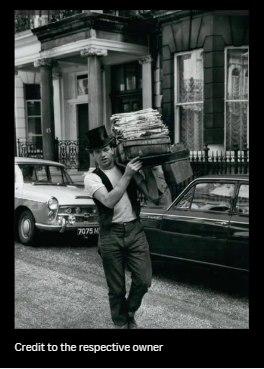In 1964, dustman Dennis Angel of Notting Hill added a touch of flair to the streets of London when he started wearing a top hat while collecting rubbish in the Royal Borough of Kensington. A charming photograph by J. Wilds captures Angel standing proudly beside his cart, dressed in work overalls but topped with the unexpected elegance of formal headwear. The contrast is striking—refuse collection, a gritty, often overlooked job, elevated by a symbol of upper-class style. His top hat wasn’t part of any uniform—it was his own quiet statement, perhaps of pride, humour, or simply a wish to brighten his daily rounds.
Notting Hill in the 1960s was a neighbourhood in transition, balancing working-class traditions with growing cultural vibrancy. Dustmen like Angel were vital to the city’s rhythm yet rarely noticed beyond their task. By wearing the top hat, Angel made himself memorable—a figure who refused to fade into the background. Locals came to recognise and smile at him, children waved, and his presence became part of the borough’s daily theatre. He reminded Londoners that dignity and individuality could shine even in the most routine jobs.
The image of Dennis Angel is more than just a quirky footnote in the city’s visual history—it reflects the quiet pride of workers who served London with consistency and care. His top hat became both a symbol and a shield: a way to redefine a role often seen as dirty or menial, and a personal gesture that caught attention and lifted spirits. In an era of social change and rising class awareness, Angel’s small act of self-expression left a lasting impression—proof that style, humour, and humanity can be found in the most unexpected places.
